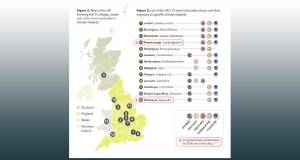- Government
- Posted
EU votes through EPBD recast
This article was originally published in issue 44 of Passive House Plus magazine. Want immediate access to all back issues and exclusive extra content? Click here to subscribe for as little as €15, or click here to receive the next issue free of charge
The EU is set to introduce imminent minimum energy performance standards for existing buildings, among several changes in a recast to the Energy Performance of Buildings Directive (EPBD). The proposed recast also includes a zero-emission new build standard, mandatory whole life carbon calculation and targets, indoor environmental quality requirements and building renovation passports, among other measures.
On 14 March, the European Parliament voted through proposals to overhaul the directive, including a requirement for whole life carbon (WLC) calculation for new buildings by 2027, followed by WLC targets from 2030. Whole life carbon takes account of the embodied carbon required to construct, maintain and dispose of a building, along with carbon emissions from operational energy use across its lifespan. The directive frames this in terms of the life-cycle global warming potential (GWP) of the building.
Minimum energy performance standards based on harmonised energy performance classes are set to be introduced to phase-out the worst-performing buildings and prompt the continuous improvement of Europe’s building stock, targeting the EU’s longterm goal of a decarbonised building stock by 2050. Member states will be required to introduce building renovation passports to help facilitate this change.
The proposals include a major overhaul of how the energy performance of buildings is calculated, with implications for national calculation methodologies such as Ireland’s DEAP and iSBEM and associated Building Energy Rating scale. Member states will be required to set the energy performance of buildings on an A to G scale, and to define the G band to align with the worst-performing 15 per cent of the national building stock.
Excluding exemptions, all non-residential buildings will be required to reach D class by 2030, followed by residential buildings by 2033. Energy performance certificates with a D class or lower will only have a fiveyear validity.
Exemptions will be made for conservation and heritage buildings, although the EU plans to set technical guidelines to enable the renovation of these buildings while maintaining cultural value.
The proposals will require member states to ensure that the life-cycle GWP of new buildings is disclosed through energy performance certificates by 1 January 2027.
All new buildings will be required to meet a new “zero-emission building” standard by 1 January 2028, with new buildings “operated, occupied or owned by public authorities” required to be zero-emission buildings by 1 January 2026.
The proposed changes also require member states to set “optimal indoor environmental quality levels, including air quality, thermal comfort, [and] a high capacity to mitigate and adapt to climate change through, inter alia, green infrastructure”, within two years of the proposed directive coming into force.
While the text includes proposals for member states to ban fossil fuel heating systems in new buildings from the date of transposition of the directive, this proposal comes with a significant caveat in the statement that “hybrid heating systems, boilers certified to run on renewable fuels and other technical building systems not exclusively using fossil fuels […] shall not be considered to be fossil heating systems”, a move which may create a gap for hydrogen and fuels such as hydrotreated vegetable oil (HVO).
At the Plenary session in Strasbourg on 14 March, the European Parliament adopted its position on the directive. “A compelling case for the renovation of buildings,” exclaimed Dublin MEP Ciaran Cuffe, lead rapporteur on the directive.
“The Parliament vote is an important step in the right direction to cutting Europe’s addiction to imported fossil fuels,” explained Adrian Joyce, Renovate Europe campaign director. “The buildings directive is the opportunity to translate the political discourse on slashing energy imports into tangible action.”
The parliament’s position also facilitates new instruments to mobilise finance for renovation in order to support homeowners with renovations (such as mortgage portfolio standards) in addition to significant EU funding already available for renovation.
With a stubbornly low renovate rate across the EU at only 1 per cent, and a highly fragmented sector with over 95 per cent SMEs, setting a clear regulatory framework with the EPBD could have a transformative effect in delivering the EU’s Renovation Wave, for the benefit of citizens and businesses, and for the planet.
All eyes are now on the trilogue discussions, and especially on the European Council, where member states will also have to demonstrate their commitment to delivering a sustainable long-term solution to Europe’s energy crisis.
Related items
-
 #BuildingLife Series: Director at CORA Consulting Engineers, John Casey
#BuildingLife Series: Director at CORA Consulting Engineers, John Casey -
 September’s AECB environmental construction conference seeks to spark debate among industry experts
September’s AECB environmental construction conference seeks to spark debate among industry experts -
 Climate report warns overheating crisis threatens UK
Climate report warns overheating crisis threatens UK -
 Sustainable building leaders crowned at Exemplar Awards
Sustainable building leaders crowned at Exemplar Awards -
 Barratt launches record passive house scheme
Barratt launches record passive house scheme -
 Green homes and finance join forces for growth
Green homes and finance join forces for growth

